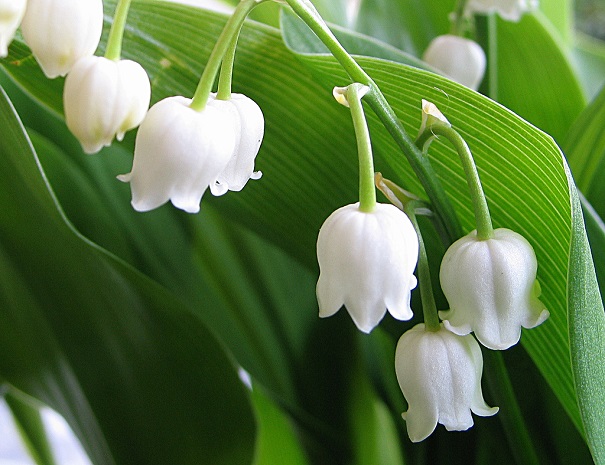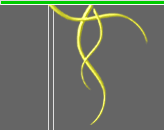| |
Lily of the Valley (Muguet, Convallaria majalis)

|
Convallaria Majalis extract is sourced from either the bulbs or roots of the lily of the valley plant. It has been used as a herbal remedy for several hundred years, but is found in modern-day cosmetics as a skin conditioning agent and fragrance. It is most often found in soaps, creams and powders, with its distinctive floral scent making it a popular choice.
Among the many, enchanting things about France is the tradition of giving beautiful Muguet (lily of the valley) bouquets to loved ones on the first day of May. The tradition began on May 1st, 1561, when King Charles IX of France was presented with Muguet flowers as a good luck charm. History does not remember who gave this perfumed gift but the king loved the idea so much that he started presenting Muguet bouquets to the ladies of his court on May 1st every year.
And that’s not all: another ancient European tradition of “bals de muguet” dances allowed a rare chance for young boys and girls to mingle without having to get parents’ permission (which could be an arduous task in those days). At these dances, the girls would dress in pure virginal white, while the boys would wear a sprig of Muguet in their buttonhole.
By the 1900s, it became traditional for French men to present Muguet flowers to their sweethearts. Hence, the day came to be affectionately nicknamed La Fête du Muguet (Lily of the Valley Day) even though the official moniker is La Fête du Travail (Labor Day).
Today, Muguet flowers are not just about romance – they are also given as good luck charms or tokens of appreciation between close friends and family members.
Convallaria majalis is an herbaceous perennial plant commonly known as Lily of the Valley. The plant is native to England, North America and North Asia. There are many myths and legends associated with the plant. According to Greek legend, Lily of the Valley was given by Apollo, the Sun God, to Aesculapius, the great healer. According to Christian mythology, the flowers of this plant represent the tears of Virgin Mother Mary. Apart from its medicinal and health benefits, wedding bouquets of these sweet smelling, beautiful flowers are carried by brides for good luck and prosperity in married life.
Lily of the Valley contains two glycosides – Convallamarin, Convallarin. It also contains flavonoids, saponins, citric acid, malic acid, essential oil and Cardenolides. Apart from these, Convallatoxins, Convalluside, and Convallatoxol are also found in these pretty flowering plants.
Lily of the Valley has many medicinal, cosmetic, and perfumery properties.
Some of the benefits that we can derive from these plants are:
Helps reduces scars: An ointment made of lily of valley is used for treating burns and other wounds without leaving any scars. It is also helpful in healing the scar tissues quickly and effectively.
Lightens Skin Tone: The flowers of this herb are infused with water to prepare a tonic called Aqua Aurea. This tonic has been used for skin lightening from medieval times. It acts as a skin astringent too.
Helps emotions: Legends say that if a person puts the oil of lily of valley on his forehead, it would impart common sense into him! It is believed the oil of this flower does help ease mental problems. The essential oil of lily of the valley is used in aromatherapy to ease headaches, depression, and melancholy.
Disclaimer: The information presented herein is intended for educational purposes only. These statements have not been evaluated by the FDA and are not intended to diagnose, cure, treat or prevent disease. Individual results may vary, and before using any supplements, it is always advisable to consult with your own health care provider.
|
|


















